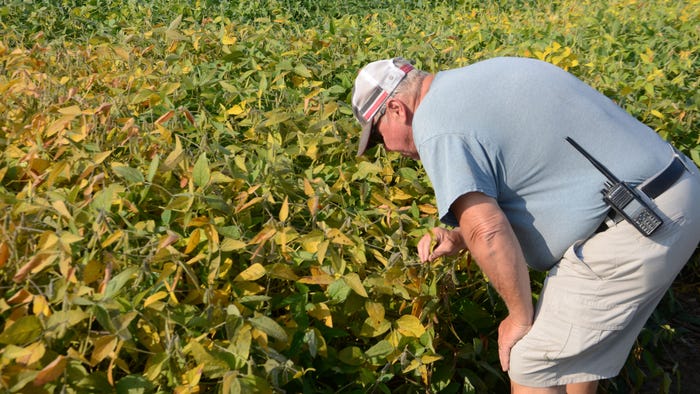
If you put out corn hybrid or soybean variety test plots, odds are good that at least once in your career, you’ve stopped to ask yourself if it is really worth your time. That question is most likely to pop up each spring, just before getting ready to plant the plots. While high-tech planters make it easier today, it still takes extra time to switch from one hybrid or variety to another, and to make sure everything is recorded correctly.
Adam and Curtis Schwering and their dad, Steve, Rushville, Ind., put out both a soybean variety plot and a corn hybrid plot each year. They cooperate with their local retailer and Brevant Seeds rep to make sure they include a wide variety of hybrids and varieties in their plots.
“We usually plant mostly Group 3 soybeans, but the plot includes a range from Group 2 to Group 4,” Adam says. “It gives us a chance to see how different genetics and different maturity ranges perform on our soils each year.”
While many areas were very dry during the summer of 2022, Steve notes that their plots were lucky, receiving enough rain to keep things moving forward. That made it interesting to walk down the line of soybean varieties, comparing to see how each responded to summer conditions in terms of podding and bean count per pod.

COMPARE COUNTS: Steve Schwering checks out pods per node and beans per pod in this variety in a farm test plot. Varieties in the plot ranged in maturity from Group 2 to Group 4.
“Walking our hybrid plots with Kyle Quick, our retail product agronomist, near harvest was enlightening,” Adam says. “We could see which hybrids stood up to the season the best.”
Other test plots
Besides hybrid and variety test plots, the Schwerings test different practices they are interested in pursuing.
“We saw a good response to sulfur in testing here in soybeans in 2021,” Curtis says. “It was about a 10-bushel-per-acre advantage. We wouldn’t have known it helped for sure without comparing.”
He adds that they saw the most response on some of their more challenging acres and less response in their darker soils. They also saw a response for applying sulfur in corn.
For 2022, they expanded how many acres they applied sulfur on, testing again. They make the application in soybeans at the R1 stage when plants are in full flower.
“The only way to know if a practice is going to help on your farm is to try it and see it for yourself,” Adam says. “You can read about it, but to be sure, you need to test it on your farm and measure the results.”
Read more about:
TrialsAbout the Author(s)
You May Also Like




